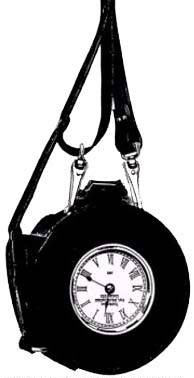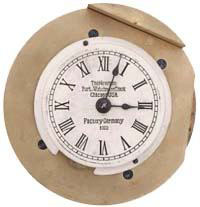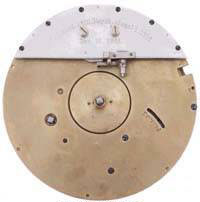 |
|||||||||||||
This is the model with which A. A. Newman commenced his portable clock business. Based on the principals of his patent, it was more difficult with the 1902 Newman clock than with any previous portable clock to make false registrations. The invention consists of separating the elements that produce an embossed station registration on the paper, placing the die in the clock and the type that fits that die, on the station key. Another feature of less remarkable nature, but nevertheless probably quite important to his future business success, was his introduction of face and hands in portable watchclocks. He had featured face and hands in his large stationary clocks (see I.D. 712 et al) starting in the 1880s. The 1902 Newmans were far heavier than any known in Nineteenth Century portable clocks and carried heavier movements. The movements are marked with the Württemberg Uhrenfabrik Schwenningen monogram, "WUS", accompanied by the name "Bürk" in script. In some clocks, in additon to the above, the words "Württemberg. Uhrenfabrik / Germany" with "Eleven (11) Jewels" appear. |
|||||||||||||
 |
|||||||||||||
Newman 1902, face |
|||||||||||||
 |
|||||||||||||
1902 Newman from |
|||||||||||||
Newman 1902, Dial Side |
|||||||||||||